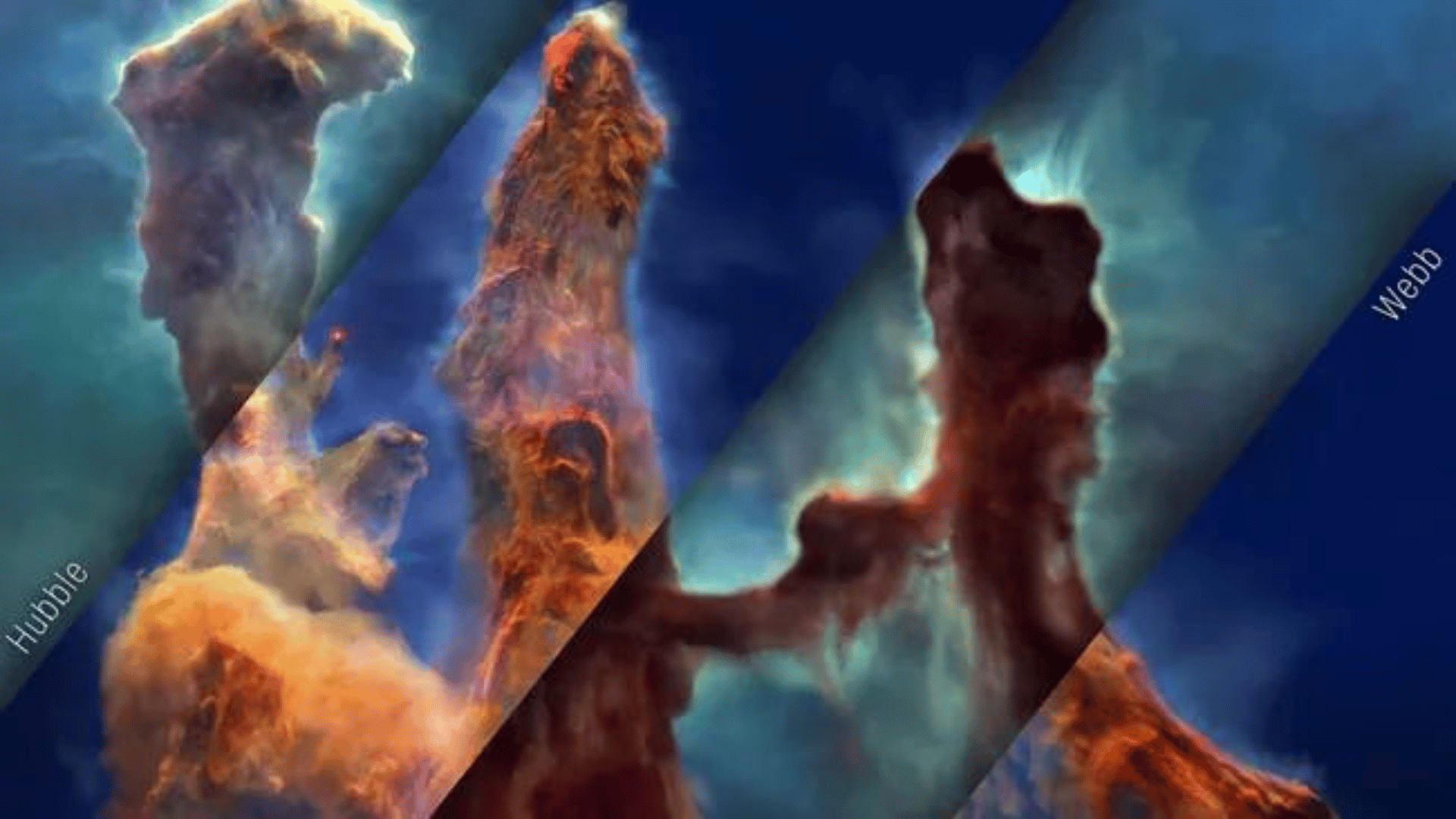The James Webb Telescope recently created a 3D visualization of the “Pillars of Creation,” which is an image of interstellar gas and dust taken by the Hubble Space Telescope in 1995.

One of the most famous deep-sky images ever taken, the phenomenon is located about 6,000 light-years away in the constellation Serpens. One of the Hubble Space Telescope’s first images, and now a staple on space merchandise everywhere, features towering tendrils of interstellar gas and dust in a star-forming region called the Eagle Nebula.
In addition to showing a stunning view of space, the new image, which was featured in a video released by NASA, also showcases the differences between the two telescopes.
JWST’s newer data helps astronomers study different aspects of the same object. The two telescopes specialize in different wavelengths of light – the Hubble captures primarily visible light, while the JWST is more sensitive to infrared light.
Explore Tomorrow's World from your inbox
Get the latest innovations shaping tomorrow’s world delivered to your inbox!
I understand that by providing my email address, I agree to receive emails from Tomorrow's World Today. I understand that I may opt out of receiving such communications at any time.
The nebula’s pillars are slowly being eroded by ultraviolet light from hot, young stars born in the region. While Hubble’s data show brown dust and yellow ionized gas with a green/blue background, the new JWST data cause the pillars to appear semi-transparent with light-blue ionized gas and a dark blue background.
Infrared light permeates everything but the densest parts, the pillars of gas and dust, with the tallest pillar reaching approximately three light-years across.
“When we combine observations from NASA’s space telescopes across different wavelengths of light, we broaden our understanding of the universe,” Mark Clampin, Astrophysics Division director at NASA Headquarters in Washington, D.C., said in a statement. “The Pillars of Creation region continues to offer us new insights that hone our understanding of how stars form. Now, with this new visualization, everyone can experience this rich, captivating landscape in a new way.”






